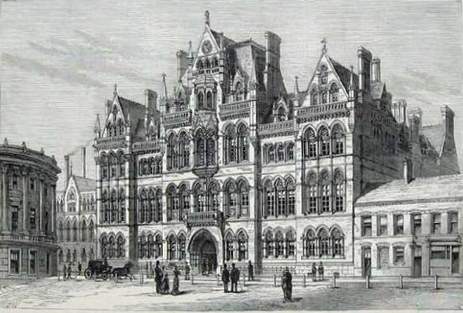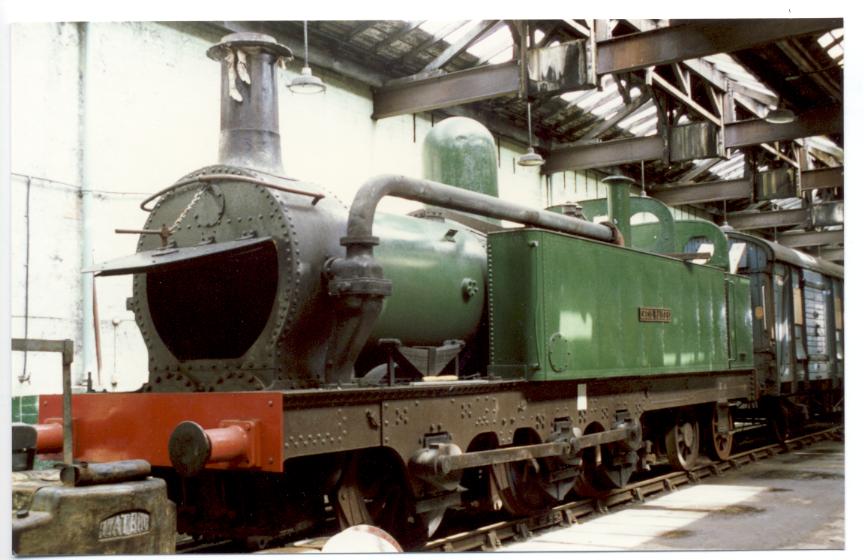|
LMS Fowler 2-6-2T
The London, Midland and Scottish Railway (LMS) Fowler 2-6-2T was a class of steam locomotive. The LMS classified them 3P, BR 3MT. All were built at Derby Works between 1930 and 1932. William Stanier used them to form the basis for the LMS Stanier 2-6-2T, which was essentially a taper boilered version. Numbering They were initially numbered 15500–15569, but from 1934 were renumbered 1–70. After nationalisation in 1948 British Railways added 40000 on to their numbers to number them 40001–70. Variations Numbers 15520–39 (later 21–40 and 40021–40) were fitted with Condensing steam locomotive, condensing apparatus to work around London. Some of the non-condensing ones were fitted with vacuum operated Push–pull train, pull and push control. Withdrawal All were withdrawn between 1959 and 1962. None were preserved. References * External links Class 3P-A Details at ''Rail UK'' London, Midland and Scottish Railway locomotives, 3 Fowler 2-6-2T 2-6-2T loc ... [...More Info...] [...Related Items...] OR: [Wikipedia] [Google] [Baidu] |
Sir Henry Fowler
Sir Henry Fowler, (29 July 1870 – 16 October 1938) was an English railway engineer, and was chief mechanical engineer of the Midland Railway and subsequently the London, Midland and Scottish Railway. Biography Fowler was born in Evesham, Worcestershire, on 29 July 1870. His father, also named Henry, was a furniture dealer, and his family were Quakers. He was educated at Prince Henry's Grammar School, Evesham (now Prince Henry's High School, Evesham), and at Mason Science College (which became the University of Birmingham) between 1885 and 1887 where he studied metallurgy. He served an apprenticeship under John Aspinall at the Lancashire and Yorkshire Railway (L&YR)'s Horwich Works from 1887 to 1891. Fowler was a elected as a Whitworth Exhibitioner in 1891. He then spent four years in the Testing Department under George Hughes, whom he succeeded as head of the department. Between 1895 and 1900, he was gas engineer of the L&YR, moving on 18 June 1900 to the Midland Ra ... [...More Info...] [...Related Items...] OR: [Wikipedia] [Google] [Baidu] |
Condensing Steam Locomotive
A condensing steam locomotive is a type of locomotive designed to recover exhaust steam, either in order to improve range between taking on boiler water, or to reduce emission of steam inside enclosed spaces. The apparatus takes the exhaust steam that would normally be used to produce a draft for the firebox, and routes it through a heat exchanger, into the boiler water tanks. Installations vary depending on the purpose, design and the type of locomotive to which it is fitted. It differs from the usual closed cycle condensing steam engine, in that the function of the condenser is primarily either to recover water, or to avoid excessive emissions to the atmosphere, rather than maintaining a vacuum to improve both efficiency and power. Thermodynamics Unlike the surface condenser often used on a steam turbine or marine steam engine, the condensing apparatus on a steam locomotive does not normally increase the power output, rather it decreases due to a reduction of airflow to th ... [...More Info...] [...Related Items...] OR: [Wikipedia] [Google] [Baidu] |
Condensing Steam Locomotives
Condensing may refer to: *Condensation *Condensing steam locomotive *Condensing boiler *Condensing osteitis Condensing osteitis is a periapical inflammatory disease that results from a reaction to a dental related infection. This causes more bone production rather than bone destruction in the area (most common site is near the root apices of premolar ... {{disambig ... [...More Info...] [...Related Items...] OR: [Wikipedia] [Google] [Baidu] |
Railway Locomotives Introduced In 1930
Rail transport (also known as train transport) is a means of transport that transfers passengers and goods on wheeled vehicles running on rails, which are incorporated in tracks. In contrast to road transport, where the vehicles run on a prepared flat surface, rail vehicles (rolling stock) are directionally guided by the tracks on which they run. Tracks usually consist of steel rails, installed on sleepers (ties) set in ballast, on which the rolling stock, usually fitted with metal wheels, moves. Other variations are also possible, such as "slab track", in which the rails are fastened to a concrete foundation resting on a prepared subsurface. Rolling stock in a rail transport system generally encounters lower frictional resistance than rubber-tyred road vehicles, so passenger and freight cars (carriages and wagons) can be coupled into longer trains. The operation is carried out by a railway company, providing transport between train stations or freight customer facilit ... [...More Info...] [...Related Items...] OR: [Wikipedia] [Google] [Baidu] |
Push–pull Train
Push–pull is a configuration for locomotive-hauled trains, allowing them to be driven from either end of the train, whether having a locomotive at each end or not. A push–pull train has a locomotive at one end of the train, connected via some form of remote control, such as multiple-unit train control, to a vehicle equipped with a control cab at the other end of the train. This second vehicle may be another locomotive, or an unpowered control car. In the UK and some other parts of Europe, the control car is referred to as a ''driving trailer'' (or driving van trailer/DVT where there is no passenger accommodation); in the US and Canada, they are called ''cab cars''. Train formation Locomotive at one end Historically, push–pull trains with steam power provided the driver with basic controls at the cab end along with a bell or other signalling code system to communicate with the fireman located in the engine itself in order to pass commands to adjust controls not ... [...More Info...] [...Related Items...] OR: [Wikipedia] [Google] [Baidu] |
London
London is the capital and largest city of England and the United Kingdom, with a population of just under 9 million. It stands on the River Thames in south-east England at the head of a estuary down to the North Sea, and has been a major settlement for two millennia. The City of London, its ancient core and financial centre, was founded by the Romans as '' Londinium'' and retains its medieval boundaries.See also: Independent city § National capitals The City of Westminster, to the west of the City of London, has for centuries hosted the national government and parliament. Since the 19th century, the name "London" has also referred to the metropolis around this core, historically split between the counties of Middlesex, Essex, Surrey, Kent, and Hertfordshire, which largely comprises Greater London, governed by the Greater London Authority.The Greater London Authority consists of the Mayor of London and the London Assembly. The London Mayor is distinguished fr ... [...More Info...] [...Related Items...] OR: [Wikipedia] [Google] [Baidu] |
LMS Stanier 2-6-2T
The Stanier Class 3P 2-6-2T was a class of London, Midland and Scottish Railway (LMS) steam locomotive. They were designed by William Stanier based on the earlier LMS Fowler 2-6-2T The London, Midland and Scottish Railway (LMS) Fowler 2-6-2T was a class of steam locomotive. The LMS classified them 3P, BR 3MT. All were built at Derby Works between 1930 and 1932. William Stanier used them to form the basis for the LMS Stanier .... Overview A taper-boiler versions of Henry Fowler's 1930 design, the general dimensions were the same with some improvements. They were under-boilered and although improved they were always considered to be indifferent performers. In some ways they were inferior to their predecessors. The cab was of Stanier's usual excellent design with the coal bunker built higher than the rear cab windows but angled inwards to avoid them, thus giving good visibility when running bunker first. The first 2 lots (117 and 126, locomotives 71–144) were built with ... [...More Info...] [...Related Items...] OR: [Wikipedia] [Google] [Baidu] |
Derby Works
The Derby Works comprised a number of British manufacturing facilities designing and building locomotives and rolling stock in Derby, England. The first of these was a group of three maintenance sheds opened around 1840 behind Derby station. This developed into a manufacturing facility called the Midland Railway Locomotive Works, known locally as "the loco" and in 1873 manufacturing was split into locomotive and rolling stock manufacture, with rolling stock work transferred to a new facility, Derby Carriage & Wagon Works. From its earliest days, it had carried out research and development in a number of areas, and in 1933 the London, Midland and Scottish Railway opened the LMS Scientific Research Laboratory. Around 1964, this became part of a new British Rail Research Division, based in the purpose-built Railway Technical Centre, which also housed the Department of Mechanical & Electrical Engineering (DM&EE) and later the headquarters of British Rail Engineering Limited. Earl ... [...More Info...] [...Related Items...] OR: [Wikipedia] [Google] [Baidu] |
William Stanier
Sir William Arthur Stanier, (27 May 1876 – 27 September 1965) was a British railway engineer, and was chief mechanical engineer of the London, Midland and Scottish Railway. Biography Sir William Stanier was born in Swindon, where his father worked for the Great Western Railway (GWR) as William Dean (engineer), William Dean's Chief Clerk, and educated at Swindon High School and also, for a single year, at Wycliffe College (Gloucestershire), Wycliffe College. In 1891 he followed his father into a career with the GWR, initially as an office boy and then for five years as an apprentice in the workshops. Between 1897 and 1900 he worked in the Drawing Office as a Drafter, draughtsman, before becoming Inspector of Materials in 1900. In 1904, George Jackson Churchward appointed him as Assistant to the Divisional Locomotive Superintendent in London. In 1912 he returned to Swindon to become the Assistant Works Manager and in 1920 was promoted to the post of Works Manager. In l ... [...More Info...] [...Related Items...] OR: [Wikipedia] [Google] [Baidu] |
Steam Locomotive
A steam locomotive is a locomotive that provides the force to move itself and other vehicles by means of the expansion of steam. It is fuelled by burning combustible material (usually coal, oil or, rarely, wood) to heat water in the locomotive's boiler to the point where it becomes gaseous and its volume increases 1,700 times. Functionally, it is a steam engine on wheels. In most locomotives, the steam is admitted alternately to each end of its cylinders, in which pistons are mechanically connected to the locomotive's main wheels. Fuel and water supplies are usually carried with the locomotive, either on the locomotive itself or in a tender coupled to it. Variations in this general design include electrically-powered boilers, turbines in place of pistons, and using steam generated externally. Steam locomotives were first developed in the United Kingdom during the early 19th century and used for railway transport until the middle of the 20th century. Richard Trevithick ... [...More Info...] [...Related Items...] OR: [Wikipedia] [Google] [Baidu] |




.jpg)
